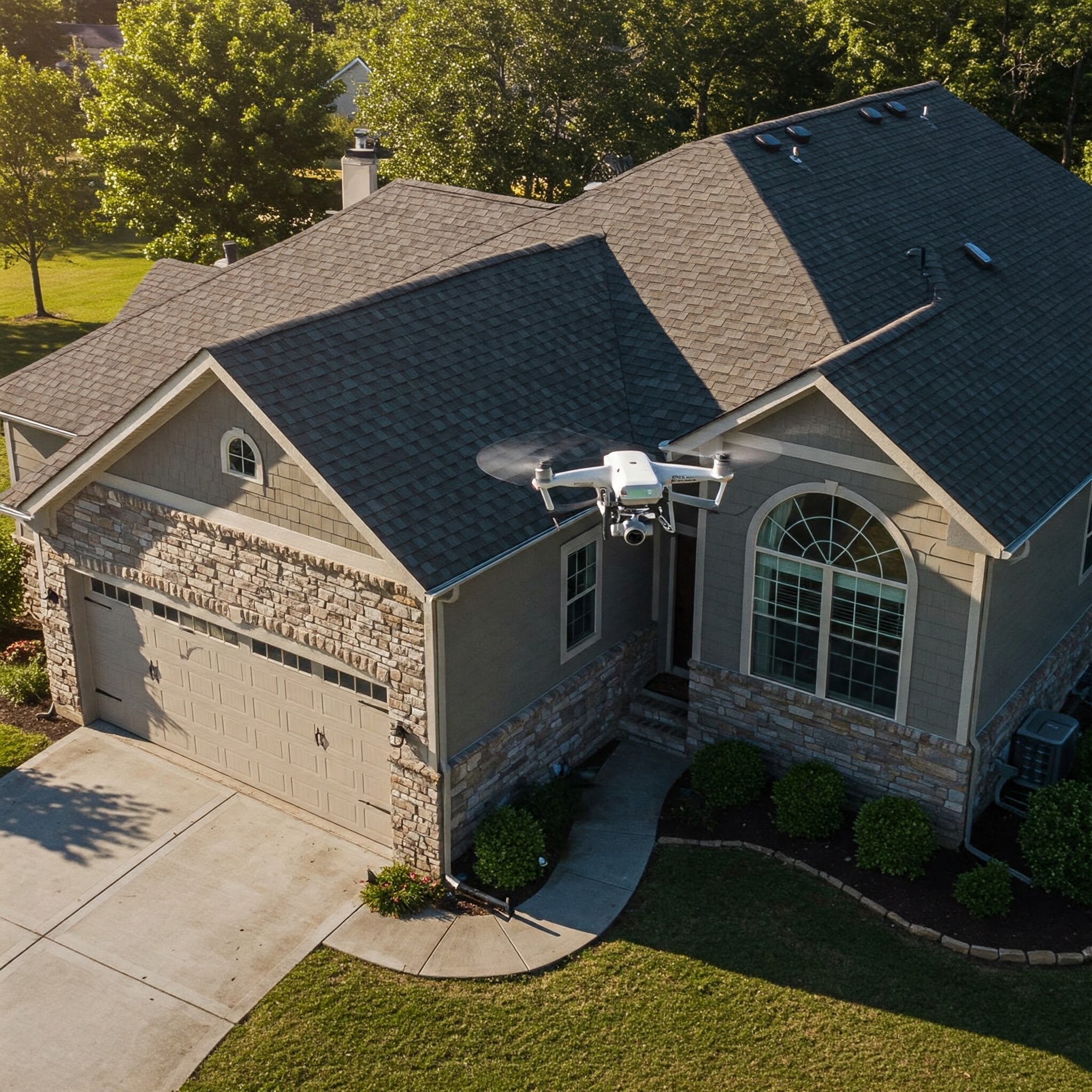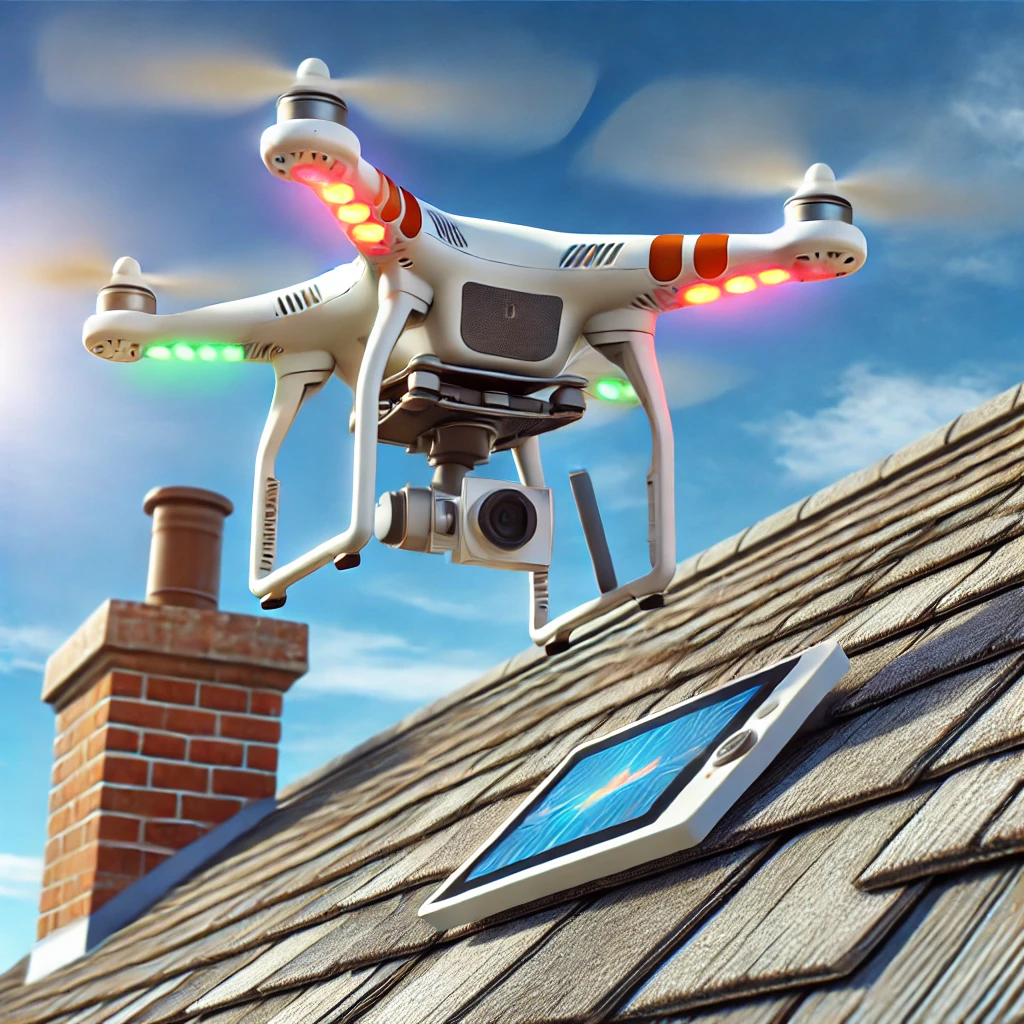When assessing your home’s condition, traditional methods can be limited, particularly for hard-to-reach areas like roofs and chimneys. Drone home inspections are revolutionizing property assessments, bringing high-resolution cameras and advanced sensors that easily navigate dangerous or inaccessible spots. This technology has become an essential asset for home inspectors.
Drone inspections are invaluable whether you’re a homeowner identifying issues early, a real estate agent requiring a comprehensive property review, or a buyer making an educated purchase. They offer transformative benefits for the inspection process, including safety, efficiency, and accuracy.
The adoption of drones in home inspections transcends mere convenience. It’s about enhancing safety by minimizing the risks linked to physical inspections and improving efficiency and accuracy. Drones can capture detailed property images and videos, covering both exteriors and interiors in significantly less time than traditional methods. This advancement not only accelerates the inspection process but also mitigates hazards like falls.
Considering drone home inspections involves understanding their advantages and potential limitations to make a well-informed decision.
The Benefits of Drone Home Inspections
Enhanced Safety
One of the most significant advantages of drone home inspections is the enhanced safety they provide. Traditional home inspections often require inspectors to climb ladders, access rooftops, and navigate other high-risk areas, which can lead to injuries and accidents. Drones eliminate this risk by allowing inspectors to assess these areas from a safe distance.
By keeping personnel on the ground, drones reduce the likelihood of falls, accidents, and other hazards, creating a safer work environment for everyone involved.
Access to Difficult Areas
Drones are particularly useful for inspecting areas that are difficult or dangerous for human inspectors to reach. This includes rooftops with steep pitches, tall chimneys, and other elevated structures. Drones can effortlessly fly above or around these structures, capturing clear visuals and providing a comprehensive assessment without the need for specialized equipment like cranes or scaffolding.
This capability is especially valuable for inspecting hard-to-reach areas that might otherwise be overlooked or require significant resources to access manually.
Improved Efficiency and Detail
Drones significantly enhance the efficiency and detail of home inspections. Equipped with high-resolution cameras, GPS features, and advanced sensors, drones can capture in-depth and clear images from various angles, including live footage. This level of detail allows inspectors to identify even the smallest defects or damages, such as lifting shingles or bent flashing, which might be missed in a traditional inspection.
Additionally, drones can cover a wide range of the property quickly, collecting larger datasets that include high-quality images, videos, and sensor readings. This detailed data collection enables in-depth analysis and trend identification, helping homeowners and buyers make informed decisions about the property’s condition and future maintenance needs.
The Drawbacks of Drone Home Inspections
Regulatory Challenges
One of the significant drawbacks of using drones for home inspections is the complex regulatory landscape. In the United States, for example, the Federal Aviation Administration (FAA) has stringent rules under Part 107 for commercial drone operations. This includes the requirement for operators to obtain a Remote Pilot Certificate, register their drones, and adhere to specific flight restrictions such as flying within the visual line of sight and observing altitude limits.
Additionally, there is often an inconsistent overlap between federal laws and local regulations, which can create challenges for drone operators. This variability can lead to confusion and potential legal issues if not navigated correctly.
For instance, some areas may have no-fly zones or specific permits required for drone operations, which can add complexity and cost to the inspection process.
High Initial Costs
The initial investment required for drone home inspections can be substantial. High-quality drones suitable for detailed inspections, such as the DJI Mavic Enterprise or DJI Phantom Pro, can cost anywhere from $5,000 to $30,000.
These drones often come equipped with advanced features like high-resolution cameras and thermal imaging capabilities, which are essential for accurate and detailed inspections. Furthermore, the cost of quality cameras and sensors, as well as software for data analysis, can add to the overall expense.
Besides the hardware costs, there are also operational costs to consider, including the cost of hiring skilled drone operators. Experienced operators can charge between $50 and $150 per hour, depending on their expertise and the complexity of the inspection.
These costs can accumulate quickly, making the initial setup and ongoing operation of a drone inspection service quite expensive.
Technical Limitations and Reliability Issues
Despite their advantages, drones are not immune to technical limitations and reliability issues. Weather conditions such as strong winds, heavy rain, or extreme temperatures can hinder drone operations, making it difficult or impossible to conduct inspections.
Additionally, battery life and signal strength can be limiting factors, especially for larger properties or more complex inspections that require prolonged flight times.
Moreover, drones can be prone to mechanical failures or software glitches, which can disrupt the inspection process. Ensuring that drones are regularly maintained and updated with the latest firmware is essential but adds to the overall operational costs.
The reliability of the data collected also depends on the quality of the equipment and the skill of the pilot, which can introduce variability in the accuracy and consistency of the inspection results.
The Advantages of Drone Home Inspections
Drone home inspections offer a safer, faster, and more detailed alternative to traditional methods. By utilizing high-resolution imaging and advanced scanning technology, drones can identify potential issues that may be missed during manual inspections. Whether assessing roof damage, structural integrity, or hard-to-reach areas, drones provide comprehensive data with minimal disruption.
One of the key benefits of drone inspections is their accuracy. Equipped with cutting-edge sensors, drones capture detailed images and thermal data, allowing inspectors to detect even the smallest vulnerabilities. For a deeper look into how drone technology enhances inspection precision, check out The Benefits of a Drone Roof Inspection for Accuracy.
By integrating drone technology into home inspections, homeowners and professionals gain access to faster, more reliable assessments, ultimately leading to better decision-making and cost-effective maintenance.
In conclusion, drone home inspections offer a revolutionary approach to property assessments, combining enhanced safety, improved efficiency, and detailed data collection. These inspections are ideal for accessing hard-to-reach areas, reducing the risk of accidents, and providing high-resolution images and live footage.
However, it’s important to consider the regulatory challenges, high initial costs, and technical limitations associated with drone use. By weighing the pros and cons, you can make an informed decision that suits your needs.
Whether you’re a homeowner, real estate agent, or property inspector, incorporating drones into your inspection process can significantly enhance the accuracy and speed of your assessments. Take the next step and explore how drone home inspections can benefit your property and business.
FAQ
A drone home inspection uses unmanned aerial vehicles (UAVs) equipped with cameras and sensors to assess a home's roof and exterior. It provides high-resolution images and data without the need for ladders or manual inspections. In North Carolina and South Carolina, where hurricanes, heavy rains, and high humidity can cause roof damage, drone inspections offer a fast and effective way to identify issues before they become costly repairs.
Drone roof inspections are highly accurate, capturing detailed images, thermal scans, and 3D models to detect leaks, cracks, missing shingles, and structural damage with greater precision than traditional methods. In the Carolinas, where roofs often endure storm damage, high winds, and hail, drones help provide a more comprehensive damage report for homeowners and insurance claims.
Yes! Drone home inspections are safer than manual inspections since they eliminate the risk of climbing roofs. Licensed drone operators in North Carolina and South Carolina follow FAA regulations and state-specific guidelines for commercial drone use. In areas like Charlotte, Raleigh, Charleston, and Myrtle Beach, many roofing companies and home inspectors use drones to provide efficient, high-quality inspections.
The cost of a drone home inspection varies based on location, roof size, and additional services like thermal imaging or 3D modeling. In North and South Carolina, prices typically range from $150 to $500, depending on factors like roof complexity, storm damage assessments, and insurance-related inspections.
- Faster and more efficient than manual inspections, especially after storms
- High-resolution imagery for assessing hurricane and hail damage
- No need for ladders or scaffolding, reducing safety risks
- Easier access to steep and coastal-area roofs
- More affordable than traditional inspections, making it ideal for homeowners in cities like Charlotte, Greensboro, Charleston, and Columbia

